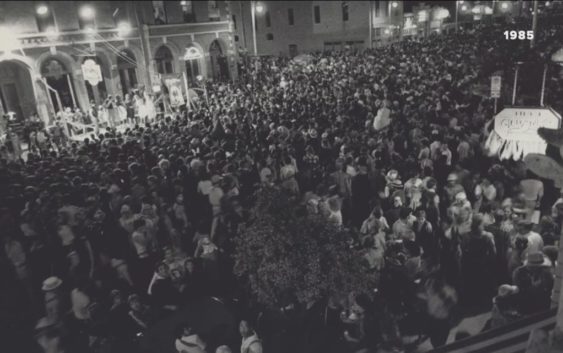From poison scares to floods, to COVID – nothing has dampened Austin’s Halloween spirit over the years.

We took a look back at Halloweens past in the Capital City.
AUSTIN, Texas — Mention Austin and Halloween in the same sentence and, more than likely, the big crowds along Sixth Street on Halloween night come to mind. It’s a tradition that has been going strong since the 1980s.
Away from downtown, it seems that there’s always been an endless parade of kids ringing doorbells for Halloween treats.
But the Oct. 31 holiday was not always the big deal it is today.
Pictures from Austin from the 1950s and ’60s that are available online from The Portal to Texas History, curated by the University of North Texas, show a much simpler time, with photos of modest parties for kids at the Pan Am Recreation Center and Rosewood.
An online search of photos from national archives shows much less elaborate and predictable costumes for kids from decades gone by, the most common being skeletons, ballerinas, cowboys and ghosts.
Historians of popular culture in the U.S. point to the 1970s as the decade when greater numbers of adults started joining in on the Halloween fun.
Masks for grown-ups were big in the 1970s and ’80s, based on a review of KVUE News Halloween night stories from the period. A 1979 news feature shows that Miss Piggy outfits – popularized by “The Muppet Movie” – were popular for women, while monster masks or masks depicting political figures like former Presidents Richard Nixon and Ronald Reagan were popular for men.
But not all Halloween memories from 50 years ago are about having fun.
In the mid-1970s, some Texas officials called for a ban on trick-or-treating in the aftermath of a crime committed by a real-life monster, Ronald O’Bryan of Houston. He was convicted of poisoning his own son by slipping cyanide into his Halloween candy. It was a scheme to collect the boy’s life insurance money. O’Bryan was executed at Texas State Penitentiary in Huntsville, Texas, in 1984 for his son’s murder.
The 1970s were also the time when hospitals and clinics offered to X-ray kids’ trick-or-treat bags on Halloween night to make sure nothing dangerous was inside after reports of needles, razor blades and other sharp objects that had been found embedded in some candy, though there were no reports of sharp objects found inside candy in Central Texas.
A major flood in Central Texas in 2013 virtually washed out Halloween that year in Austin. And during the COVID-19 pandemic in 2020 and 2021, there were fewer parties and trick-or-treaters. That led a Round Rock inventor to use a robot he had built to dish out candy to the few kids who went door-to-door.
Still, despite the pandemic, the flood and the fear, Halloween marches on. After all, there’s no stopping a holiday where Americans are spending in excess of $12 billion on candy and costumes this year.